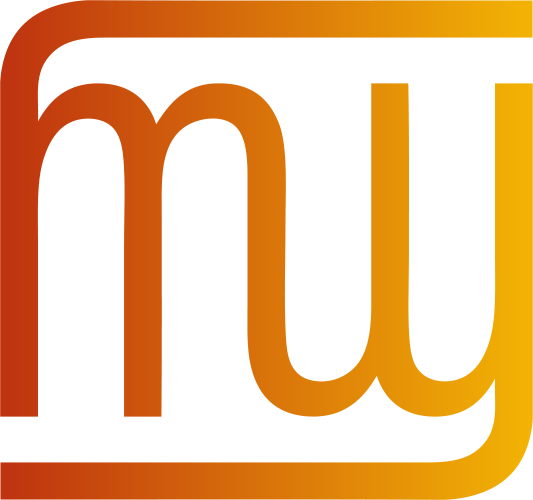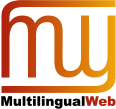 The W3C Internationalization (I18n) Activity works with W3C working groups and liaises with other organizations to make it possible to use Web technologies with different languages, scripts, and cultures.
The W3C Internationalization (I18n) Activity works with W3C working groups and liaises with other organizations to make it possible to use Web technologies with different languages, scripts, and cultures.
From this page you can find articles and other resources about Web internationalization, and information about the groups that make up the Activity.
Read also about opportunities to participate and fund work via the new Sponsorship Program.
What the W3C Internationalization Activity does
Selected quick links
Selected quick links
Selected quick links
W3C Workshop Report on the MultilingualWeb workshop in Riga

A report summarizing the MultilingualWeb workshop in Riga is now available from the MultilingualWeb site. It contains a summary of each session with links to presentation slides and minutes taken during the workshop in Riga. The workshop was a huge success. With the parallel Connecting Europe Facility (CEF) event, it had more than 200 registered participants. See a summary of highlights, and a dedicated report about outreach activities of the supporting EU funded LIDER project. The Workshop was locally organized by Tilde, sponsored by the LIDER project and by Verisign. Learn more about the Internationalization Activity.
First Public Working Draft: Requirements for Chinese Text Layout 中文排版需求
The Internationalization Working Group has published a First Public Working Draft of Requirements for Chinese Text Layout (中文排版需求), on behalf of the Chinese Layout Task Force, part of the Internationalization Interest Group.
The document describes requirements for Chinese script layout and text support on the Web and in digital publications. These requirements inform developers of Web technologies such as CSS, HTML, and SVG, and inform browser and tool implementers, about how to support the needs of users in Chinese-speaking communities.
This is still a very early draft and the group is looking for comments and contributions to support the ongoing development of the document.
Updated Working Draft: Requirements for Hangul Text Layout and Typography
Changes in this publication of Requirements for Hangul Text Layout and Typography (한국어 텍스트 레이아웃 및 타이포그래피를 위한 요구사항) are editorial in nature, but significant. The separate English and Korean versions of the document were merged into one page. (You can use buttons at the top right of the page to view the document in one language or the other, if you prefer.)
Merging the languages helps significantly for development and maintenance of the document, for guiding users to a language version they prefer, and for bilingual readers offers additional opportunities.
In addition, the links to issues in the document were changed to point to the github issues list, rather than the former Tracker list.
There were no substantive changes to the English (authoritative) version, but the Korean version was brought into line with earlier changes to the English text.
Updated Working Draft: Indic Layout Requirements
Indic Layout Requirements describes the basic requirements for Indic script layout and text support on the Web and in Digital Publications. These requirements provide information for Web technologies such as CSS, HTML, and SVG about how to support users of Indic scripts. The current document focuses on Devanagari, but there are plans to widen the scope to encompass additional Indian scripts as time goes on.
Changes in the new version relate to initial letter styling in Devanagari text. Editorial changes were also made to bring the document in line with recent changes to the Internationalization Activity publishing process.
Updated Working Draft: Character Model for the World Wide Web: String Matching and Searching
Character Model for the World Wide Web: String Matching and Searching builds upon Character Model for the World Wide Web 1.0: Fundamentals to provide authors of specifications, software developers, and content developers a common reference on string identity matching on the World Wide Web and thereby increase interoperability.
This new version introduces numerous editorial changes as well as replacing some temporary terminology with better terms, and integrating the case folding text from the string matching algorithm into the case folding section. The document template was also adapated to match the new Internationalization publication process. See details of changes.
Additional Requirements for Bidi in HTML & CSS published as Working Group Note
Additional Requirements for Bidi in HTML & CSS was used to work through and communicate recommendations made to the HTML and CSS Working Groups for some of the most repetitive pain points prior to HTML5 and CSS3 for people working with bidirectional text in scripts such as Arabic, Hebrew, Thaana, etc.
It is being published now as a Working Group Note for the historical record in order to capture some of the thinking that lay behind the evolution of the specifications and to help people in the future working on bidi issues to understand the history of the decisions taken. Notes have been added to give a brief summary of what was actually implemented in the HTML or CSS specifications.
Linguistic Linked Data in selected domains: 5th and 6th LIDER Roadmapping Workshops to be held in July 2015

For both workshops participation is limited. If you are interested in the Rome event please contact Tiziano Flati, for Munich please contact Philipp Cimiano.
Announcing The Unicode® Standard, Version 8.0
Version 8.0 of the Unicode Standard is now available. It includes 41 new emoji characters (including five modifiers for diversity), 5,771 new ideographs for Chinese, Japanese, and Korean, the new Georgian lari currency symbol, and 86 lowercase Cherokee syllables. It also adds letters to existing scripts to support Arwi (the Tamil language written in the Arabic script), the Ik language in Uganda, Kulango in the Côte d’Ivoire, and other languages of Africa. In total, this version adds 7,716 new characters and six new scripts. For full details on Version 8.0, see Unicode 8.0.
The first version of Unicode Technical Report #51, Unicode Emoji is being released at the same time. That document describes the new emoji characters. It provides design guidelines and data for improving emoji interoperability across platforms, gives background information about emoji symbols, and describes how they are selected for inclusion in the Unicode Standard. The data is used to support emoji characters in implementations, specifying which symbols are commonly displayed as emoji, how the new skin-tone modifiers work, and how composite emoji can be formed with joiners. The Unicode website now supplies charts of emoji characters, showing vendor variations and providing other useful information.
Some of the changes in Version 8.0 and associated Unicode technical standards may require modifications in implementations. For more information, see Unicode 8.0 Migration and the migration sections of UTS #10, UTS #39, and UTS #46.
Provide input to the planning of the Big Data Value Chain: Contribute to BDVA Summit 18-19 June, Madrid
In the context of the Big Data Value Association Madrid Summit, 17-19th June, there are two sessions of specific relevance to standards and also to multilingualism: on 18th June a session on standardization, and on 19th June a session on Multilingual Data Value Chains. If you want to have an active participation in both sessions or want to provide further feedback, please contact Felix Sasaki <fsasaki@w3.org> on Standardization and Asun Gomez-Perez <asun@fi.upm.es> on Multilingual Data Value Chains. Presentation will be short in order to promote a wide participation.
If you cannot be in Madrid please also provide your input – see above session links for further instructions. The BDVA Summit will be crucial in shaping upcoming funding opportunities related to Big Data. Don’t miss the chance to describe your views on opportunities, challenges and potential solutions for the Big Data Value Chain!
Updated articles: Working with language in HTML; Creating HTML Pages in Arabic, Hebrew and Other Right-to-left Scripts
Lists of referenced article contents were removed from both the language tutorial and the bidi tutorial to make it easier to keep the page up to date. The note about HTML5 not being stable was also removed. ‘(tutorial)’ was added to the title of the documents.